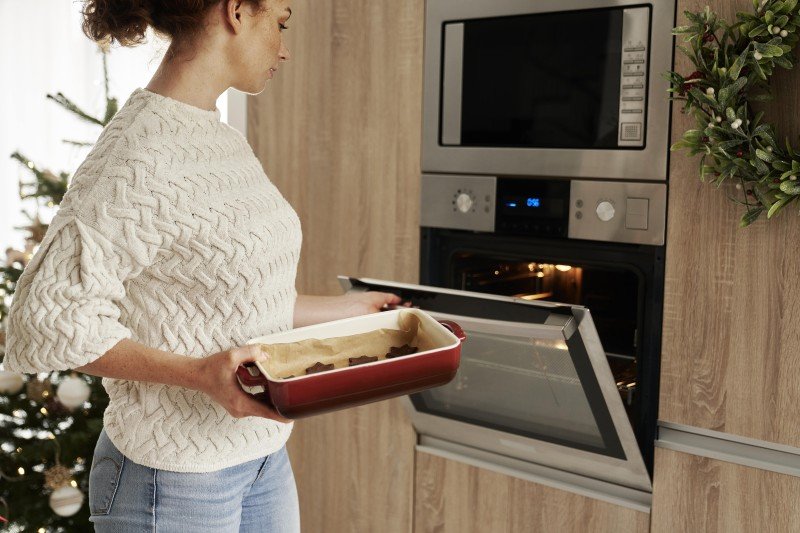Understanding Cooker Hobs and Ovens: A Comprehensive Guide
In modern-day cooking areas, cooker hobs and ovens are essential home appliances that define cooking routines and preferences. Selecting the best combination of these gadgets can substantially enhance cooking experience, improve efficiency, and even elevate home visual appeals. This short article will explore different aspects of cooker hobs and ovens, clarifying types, features, advantages, and maintenance pointers, while likewise attending to typical inquiries.
Kinds Of Cooker Hobs
Cooker hobs come in numerous types, each with special features catering to various cooking styles. Here's an overview of the most typical types:
| Type | Description | Pros | Cons |
|---|---|---|---|
| Gas Hob | Uses burner for heating; offers instant temperature control. | Immediate heat and excellent control. | Requires a gas connection; might be less safe. |
| Electric Hob | Runs utilizing electric coils or smooth surface; heats up gradually. | Even heat circulation; easy to tidy. | Takes longer to warm up; less control. |
| Induction Hob | Utilizes electromagnetic fields to heat pots straight, making it energy effective. | Quick cooking; energy-efficient. | Needs suitable cookware; more expensive. |
| Halogen Hob | Uses halogen bulbs for instant heat; offers instantaneous temperature adjustment. | Incredibly quick heating; visible heat. | Consumes more power; may not evenly heat. |
Selecting the Right Hob
When selecting a hob, think about the following aspects:
- Cooking Style: Do you choose the precision of gas, the benefit of electric, or the performance of induction?
- Cookware Compatibility: Ensure your pots and pans work with the type of hob.
- Kitchen Layout: Space and design often dictate the type of hob that matches your kitchen.
Types of Ovens
Likewise, ovens have evolved significantly, offering various cooking techniques that can complement specific culinary styles. Here are the prevalent types of ovens:
| Type | Description | Pros | Cons |
|---|---|---|---|
| Standard Oven | Conventional baking oven that uses electric or gas heat from the top and bottom. | Versatile; great for baking. | Longer preheat and cooking times. |
| Convection Oven | Utilizes a fan to distribute hot air, enabling even cooking and quicker baking times. Ovens On Sales heat evenly. | Faster cooking; even browning. | Slightly more costly; may dry food out. |
| Steam Oven | Cooks food utilizing steam, preserving nutrients and moisture. | Much healthier cooking; retains food flavor. | Takes longer to cook; more expensive. |
| Microwave | Utilizes electro-magnetic radiation to heat food quickly. | Instant cooking; perfect for reheating. | Restricted cooking approaches; might affect texture. |
Picking the Perfect Oven
When choosing an oven, keep these factors in mind:
- Cooking Habits: Are you a frequent baker or most likely to reheat leftovers?
- Area Requirements: What are the dimensions of your kitchen?
- Budget plan: Consider not simply the purchase cost however likewise energy efficiency gradually.
The Importance of Cooker Hobs and Ovens in Cooking
The right mix of cooker hob and oven can improve culinary abilities, permitting food lovers to experiment and develop a large variety of meals. Here are a few reasons why these appliances are essential:
- Efficiency: Modern hobs and ovens come with features that optimize cooking energy and times usage.
- Flexibility: Different cooking methods (bake, grill, roast, steam, and so on) broaden the series of meals one can prepare.
- Aesthetic Appeal: Stylish designs can elevate the total appearance of a kitchen, making it both functional and welcoming.
Regularly Asked Questions (FAQs)
1. What maintenance do cooker hobs and ovens need?
- Regular cleaning after usage to prevent accumulation.
- Regular look for gas leaks (for gas hobs).
- Ensuring the electrical connections are safe and secure.
2. Can I utilize any pots and pans on an induction hob?
No, induction hobs need ferrous pots and pans (i.e., magnetic) to function. This means stainless steel and cast iron work, while glass and aluminum pots may not.
3. How do I determine the best size oven for my kitchen?
Measure your available area and think about the volume of cooking you typically carry out. Standard ovens vary in size, and bigger models usually have extra functions.
4. Are convection ovens better than standard ovens?
It depends upon individual choice. Convection ovens provide faster and more even cooking but may not be perfect for all baking recipes, especially those needing particular temperatures.
5. What is the average life expectancy of a cooking hob and oven?
With proper care, both hobs and ovens can last anywhere from 10 to 20 years, depending on frequency of usage and upkeep.
Selecting the ideal cooker hob and oven not just enhances the cooking process but can likewise redefine one's cooking experience. Comprehending the different types, their advantages, and upkeep will empower customers to make educated decisions, ensuring that their kitchen is equipped to manage meals from the simplest to the most fancy. Knowledge about the capabilities of these important appliances permits culinary creativity and efficiency, eventually resulting in a more satisfying cooking journey.

